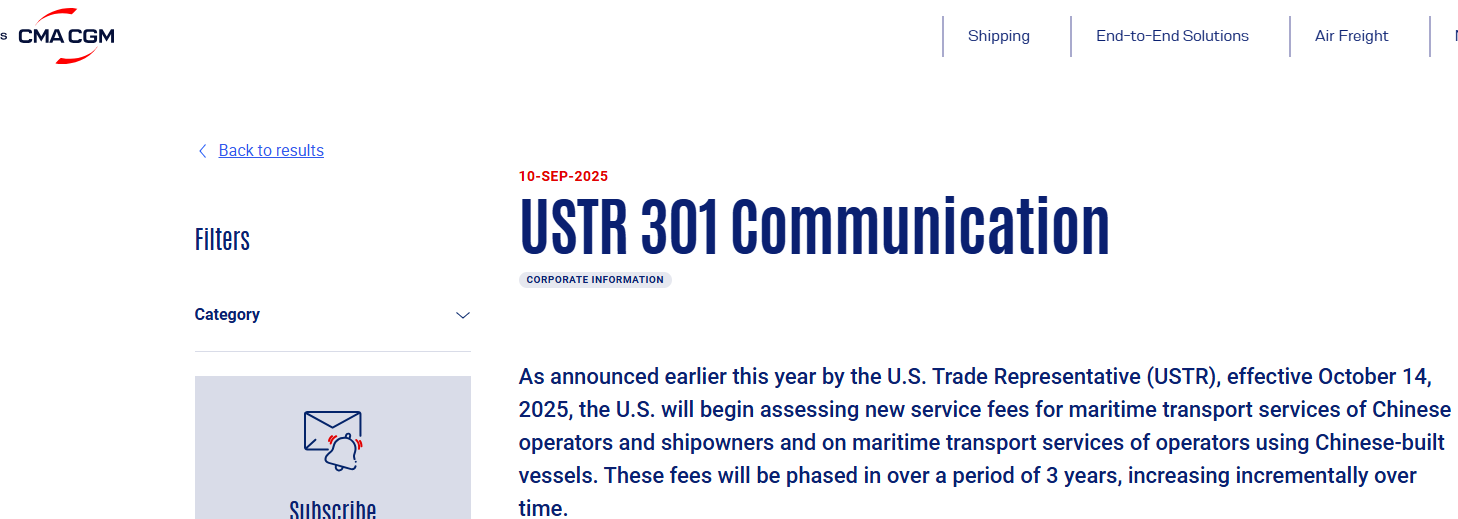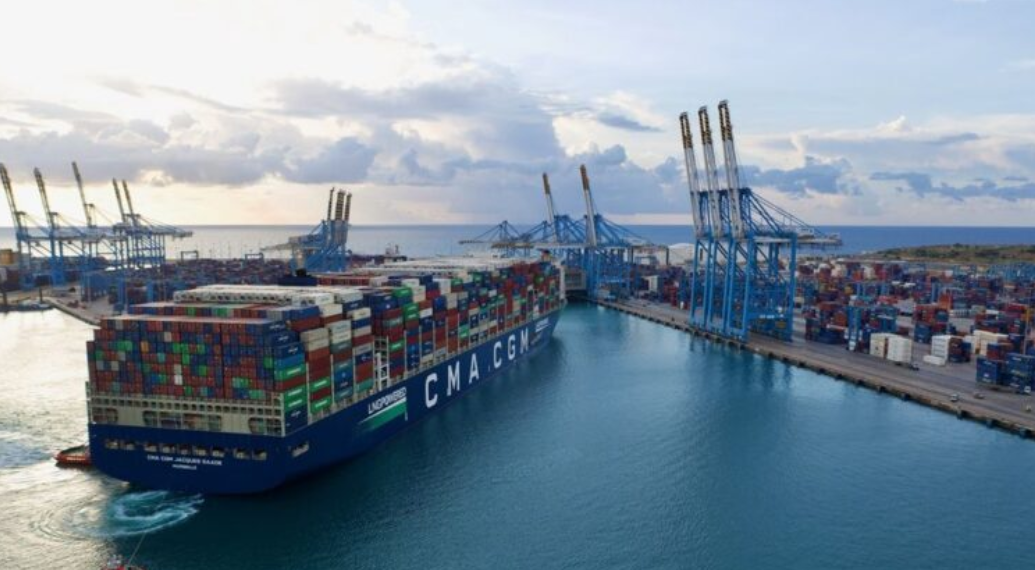Following a year-long Section 301 investigation into “China’s dominance in the maritime, logistics, and shipbuilding industries,” the Office of the U.S. Trade Representative (USTR) announced on April 17 that the U.S. will impose fees on Chinese shipowners and operators, as well as vessels built in China, effective October 14, 2025. The fee, which will be phased in over three years and increase gradually, is said to address China’s “unreasonable actions, policies and practices” that have led to its dominance of the shipping, logistics and shipbuilding industries.
In response to the U.S. port fee policy targeting China, French shipping giant CMA CGM announced on September 10 that it is fully prepared and has taken necessary measures to implement adaptive contingency plans within the 180-day grace period following the USTR announcement. The company currently has no plans to impose any USTR-related surcharges on shipments bound to the U.S..

The announcement stated that thanks to the fleet and operational adjustments implemented prior to October 14, CMA CGM currently expects to maintain service coverage to all U.S. scheduled ports while minimizing the impact of the upcoming USTR port fee policy on the company.
CMA CGM stated in its announcement: “Although U.S. port fee policies pose operational challenges for the company, based on the current service fee structure and its applicability, the company currently has no plans to implement surcharges to cover USTR-related costs under the existing framework.”
It is reported that CMA CGM has formed the Ocean Alliance together with COSCO Shipping, Evergreen Marine, and Orient Overseas Container Line (OOCL).
COSCO Shipping and its Hong Kong-based subsidiary OOCL are expected to be the two shipping companies most severely impacted by the USTR’s port fee policy. A report released earlier this week by HSBC Global Investment Research indicates that based on current fleet deployments on trans-Pacific and trans-Atlantic routes to the U.S., these two companies are projected to incur losses of $1.5 billion by 2026.

As the world’s third-largest container shipping company, CMA CGM boasts a total container capacity exceeding 4 million TEUs, capturing approximately 12% of the global market share. It holds the second-largest order book for new container ships, with 95 ships currently under construction. The total capacity of these ships under construction reaches 1.5 million TEUs, with the majority being built by Chinese shipyards.
Therefore, if CMA CGM does not adjust its operational plan, it will face substantial surcharges. According to the port fee policy details released by the USTR, vessels built in China will be charged based on the number of containers. Starting October 14, 2025, a fee of $120 will be levied per unloaded container. From 2026 to 2028, the fee will increase annually by $33, $42, and $55 respectively, reaching a maximum of $250.
However, CMA CGM’s announcement indicates that the company may implement necessary adjustments to its fleet operations to mitigate the negative impact of port fees. This also signifies greater assurance for CMA CGM’s shipbuilding collaborations with Chinese shipyards.
Last month, there were reports that CMA CGM had signed a Letter of Intent (LoI) with Dalian Shipbuilding Industry Corporation (DSIC, a subsidiary of China State Shipbuilding Corporation) for the construction of 6 firm plus 4 optional 22,000 TEU container ships powered by LNG dual-fuel. The estimated cost of each ship ranges from $205 million to $210 million, with the delivery schedule tentatively set between 2028 and 2029. CMA CGM’s official announcement has also added new weight to the conversion of this LoI order into a formal one.
Founded in 1978, CMA CGM remains privately owned by the Saadé family. Alphaliner data shows CMA CGM has a fleet of 688 ships. Its official website indicates that CMA CGM operates in 160 countries, with 400 offices, 1,000 warehouses, and 160,000 employees. It serves 420 of the world’s 521 commercial ports and operates over 250 shipping routes.


